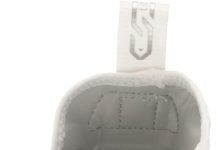As sports enthusiasts, we all know the excitement and adrenaline rush that comes with lacing up our cleats and stepping onto the field. However, have you ever stopped to consider the impact that old cleats could have on our performance and safety? In this article, we explore the question of whether or not old cleats can actually increase the risk of injuries. It’s time to take a closer look at this often overlooked aspect of our beloved sports and ensure that we are putting our best foot forward, quite literally. So, let’s dive in and uncover the truth behind the potential dangers of sporting with worn-out cleats.
The Importance of Proper Footwear
Review contents
Proper footwear for sports
When it comes to participating in sports, wearing the right footwear is essential. Proper footwear not only enhances performance but also plays a crucial role in preventing injuries. Whether you’re playing soccer, football, baseball, or any other sport, having the right shoes can make a significant difference.
The role of cleats in preventing injuries
Cleats, specifically designed for various sports, are a popular choice among athletes. They offer superior traction, stability, and support, which are key elements in preventing injuries. Cleats are equipped with specialized soles with studs or spikes that provide excellent grip on different surfaces, allowing athletes to make quick turns, abrupt stops, and sudden accelerations without slipping or losing their balance. By providing these essential features, cleats help mitigate the risk of sports-related injuries.
Understanding the Lifespan of Cleats
Factors affecting the lifespan of cleats
The lifespan of cleats varies depending on several factors. The frequency of use, playing surface, and the sports played all contribute to the wear and tear of cleats. If used frequently on rough or abrasive surfaces, such as artificial turf or concrete, cleats tend to wear out more quickly compared to those used on grass fields. Additionally, the intensity of the sport and the player’s weight can also impact the lifespan of cleats.
Signs of wear and tear
It is important to recognize the signs of wear and tear on cleats to maintain optimal performance and reduce the risk of injuries. Over time, the soles of cleats may become worn down, and the studs or spikes may lose their sharpness. Additionally, visible cracks or tears in the upper part of the shoe, loose stitching, or frayed laces are all indications that it may be time to replace your cleats. Regularly inspecting your cleats and recognizing these signs will ensure that you are always wearing footwear that provides optimal support and safety.
Effects of Old Cleats on Performance
Decreased traction and stability
As cleats age and wear out, their ability to provide adequate traction significantly diminishes. The worn-down studs or spikes may no longer grip the playing surface effectively, resulting in decreased traction. This lack of traction can hinder your ability to make quick cuts, sudden stops, or change directions swiftly, impairing your overall performance. Additionally, worn-out cleats may compromise stability, increasing the risk of slips and falls during gameplay.
Impact on agility and speed
Agility and speed are crucial in many sports, and old cleats can have a detrimental impact on both these aspects. When the studs lose their sharpness, it becomes harder to maintain good footwork and quickly react to the movements on the field. This can result in reduced agility and compromised speed, making it difficult to keep up with the pace of the game and potentially affecting your overall performance.
Increased Risk of Ankle Injuries
Stability issues and ankle sprains
Worn-out cleats can contribute to stability issues, making athletes more susceptible to ankle sprains. As the studs on the cleats lose their grip, the foot is more likely to slide on the playing surface, leading to an imbalance and increased strain on the ankle joint. This instability can cause the foot to roll inward or outward, resulting in sprained ligaments and potential long-term damage.
Risk of ankle fractures
In addition to ankle sprains, old cleats also increase the risk of ankle fractures. A lack of traction and stability can cause the foot to twist or get stuck in an awkward position during intense movements, potentially leading to a severe ankle fracture. Ankle fractures can be extremely painful, may require surgical intervention, and often result in a lengthy recovery period, hindering an athlete’s ability to participate in their chosen sport.
Potential for Foot and Toe Injuries
Pressure on feet and toes
Old cleats that have lost their cushioning properties and support can subject the feet and toes to excessive pressure. As the midsoles and insoles of cleats compress over time, they fail to provide adequate shock absorption, leading to increased stress on the feet. This can cause discomfort, pain, and potentially lead to conditions such as metatarsalgia, stress fractures, or other foot injuries.
Possible cuts and bruises
When cleats become worn out, the upper part of the shoe may also deteriorate, exposing the foot to potential risks. Sharp edges, cracks, or tears in the upper material can cause cuts, abrasions, and bruises. These injuries can be not only painful but also increase the risk of infections if not properly treated. Ensuring that your cleats are in good condition and free from any damage will help prevent these types of injuries.
Impact on Knee and Leg Injuries
Strain on knees and leg muscles
Proper footwear, including cleats, plays a vital role in distributing the forces exerted on the body during sports activities. Old cleats that have lost their ability to provide sufficient shock absorption put additional strain on the knees and leg muscles. These increased forces can lead to overuse injuries such as patellar tendonitis, shin splints, or muscle strains, preventing athletes from performing at their best.
Risk of ACL and MCL injuries
Worn-out cleats can also contribute to a higher risk of severe knee injuries such as ACL (anterior cruciate ligament) and MCL (medial collateral ligament) tears. The reduced stability and grip provided by old cleats can lead to compromised body movements, increasing the likelihood of sudden stops, pivots, or twisting motions that can place excessive stress on the ligaments. Proper footwear maintenance and timely replacement can significantly reduce the chances of sustaining these devastating knee injuries.
Link to Lower Back and Hip Injuries
Misalignment and poor posture
When wearing old cleats, especially those with worn-out soles, the body’s alignment can be compromised. The lack of proper support and stability from the footwear can lead to poor posture and misalignment of the spine. This misalignment can cause stress on the lower back and hips, potentially leading to chronic pain, muscle imbalances, and reduced athletic performance.
Impact on lower back and hip stability
Old cleats that no longer provide adequate support can affect the stability of the lower back and hips, two crucial areas for athletes. Insufficient stability during dynamic movements can increase the risk of strains, sprains, and other injuries in these regions. By wearing properly maintained and appropriately fitting cleats, athletes can maintain better stability, reducing the potential for lower back and hip injuries.
Influence on Foot Conditions and Pain
Development of blisters and calluses
Old cleats often lose their cushioning properties over time, leading to an increased risk of developing blisters and calluses. When the midsoles and insoles compress, the repetitive friction and pressure on the feet can cause painful blisters to form. Similarly, the lack of cushioning may lead to the formation of calluses, which can be uncomfortable and affect an athlete’s performance. Replacing old cleats and ensuring proper cushioning will help prevent these foot conditions.
Exacerbating foot conditions like plantar fasciitis
Individuals with pre-existing foot conditions such as plantar fasciitis are particularly at risk if they continue to use old cleats. Worn-out cleats fail to provide the necessary arch support, often aggravating the symptoms and severity of conditions like plantar fasciitis. It is imperative that athletes with foot conditions invest in appropriate footwear and replace their cleats regularly to minimize the impact on their foot health.
Psychological Factors
Confidence and performance anxiety
The condition of one’s cleats can also have psychological ramifications. Sporting old or worn-out cleats might lead to a lack of confidence in an athlete’s ability to perform optimally. This lack of confidence can contribute to performance anxiety, affecting an athlete’s overall gameplay and potentially hindering their success on the field. By investing in new cleats, athletes can boost their confidence and alleviate any unnecessary mental stress.
Fear of injuries and hesitation
Using old cleats that show signs of wear and tear can instill fear in athletes, as they may worry about potential injuries associated with inadequate footwear. The doubt and hesitation created by this fear can influence an athlete’s decision-making process during gameplay and ultimately affect their performance. By prioritizing the proper maintenance and timely replacement of cleats, athletes can eliminate such concerns and focus on their physical performance.
Prevention and Care
Proper maintenance and cleaning
To prolong the lifespan of cleats and ensure optimal performance, proper maintenance and cleaning are essential. After each use, athletes should remove dirt, grass, and debris from the cleat’s outsoles and upper part. Additionally, it is recommended to store cleats in a cool, dry place to prevent excessive moisture and reduce the risk of bacterial or fungal growth. Regularly inspecting cleats for signs of wear and tear allows athletes to take necessary action, such as replacing worn-out studs or repairing any damage, to keep their footwear in top condition.
When to replace old cleats
Knowing when to replace your old cleats is crucial for maintaining optimal performance and safety. Although the lifespan of cleats varies based on factors previously discussed, a general guideline is to consider replacing them after 45-60 hours of use. However, signs of wear and tear, loss of traction, or visible damage should prompt immediate replacement, regardless of usage time. It is better to err on the side of caution and prioritize the safety and well-being of athletes by ensuring they have reliable, functional footwear.





































